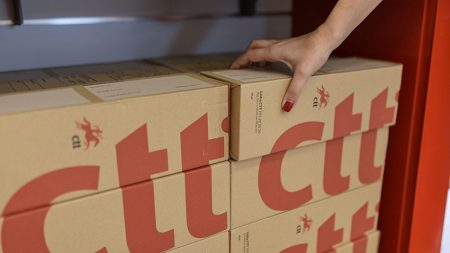Stellantis, the world’s fourth-largest automaker born from the merger of Fiat Chrysler and PSA Peugeot, has unveiled a significant investment strategy aimed at bolstering its Italian operations and supply chain. This commitment, totaling nearly €8 billion, comes at a crucial juncture for the company, following the recent ousting of CEO Carlos Tavares due to declining sales. The investment plan, presented to Italian government officials and union representatives by Stellantis’ European chief Jean-Philippe Imparato, signifies a renewed focus on Italy, addressing concerns that the company’s center of gravity had shifted away from its historical roots following the merger.
The investment strategy is twofold: a direct injection of nearly €2 billion into Italian production next year and a further €6 billion earmarked for the supply chain. This substantial financial commitment underscores Stellantis’ intent to revitalize its Italian manufacturing base and secure its future in the evolving automotive landscape. The plan includes the launch of over a dozen new models across its six Italian factories by 2032, encompassing a range of vehicles from city cars to SUVs, with a strong emphasis on hybrid and fully electric powertrains. This product offensive aims to invigorate sales and position Stellantis competitively in the face of tightening emissions regulations and growing consumer demand for electrified vehicles.
Central to Stellantis’ revitalization plan is the designation of Turin as the headquarters for its European operations starting in January 2024. This move carries symbolic weight, reaffirming the city’s historical significance in the automotive industry and allaying fears that the merger would diminish Italy’s role within the company. The specific allocation of new models to Italian plants further solidifies this commitment. The Pomigliano d’Arco plant near Naples will produce the new Fiat Pandina city car from 2028, while Turin’s Mirafiori plant will be the production hub for the iconic Fiat 500, offering both hybrid and fully electric versions. Southern Italy’s Melfi and Cassino plants will also benefit, receiving new hybrid models, including a new Jeep Compass and Alfa Romeo Giulia.
Despite the optimism surrounding the investment plan, Stellantis acknowledges the challenges ahead. 2025 is anticipated to be a difficult year, primarily due to the implementation of new European Union emissions regulations requiring a minimum of 20% of produced vehicles to be electric. These regulations pose a significant hurdle for automakers, potentially leading to fines if not met. Stellantis executives have voiced concerns about the potential impact of these regulations, calling for adjustments to allow for a smoother transition to electric mobility. Compounding the challenges are ongoing short-term layoff programs at Italian plants, a consequence of lagging sales, particularly in the electric vehicle segment.
While the investment announcement has been welcomed by unions, skepticism remains regarding its ability to fully reverse the current downturn. Union representatives acknowledge the positive shift in industrial relations but express reservations about the long-term security of jobs and the overall improvement of the situation. They point to the likely continuation of layoff schemes throughout the next year as evidence of the persistent challenges facing the Italian automotive industry. The unions’ cautious optimism highlights the delicate balance between celebrating the promised investment and demanding concrete actions to safeguard workers’ livelihoods and ensure the long-term viability of Stellantis’ Italian operations.
The €8 billion investment signifies a critical moment for Stellantis in Italy. The company aims to leverage its historical presence and manufacturing expertise in the country to navigate the complex transition towards electrification and regain its competitive edge. The success of this ambitious plan will hinge on several factors, including the successful launch of new models, effective management of the transition to electric vehicles, and fostering a collaborative relationship with unions to address workforce concerns. The coming years will be crucial for Stellantis as it strives to revitalize its Italian operations and secure a sustainable future in the rapidly evolving automotive industry.














